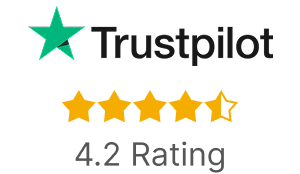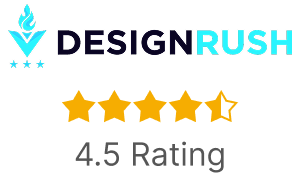In today’s digital age, having a website is essential for any small business. However, building a website for small business can be a daunting task, especially if you’re not familiar with web design and development. Furthermore, if you are starting that business there are lots of pitfalls to consider. To help you create a website that drives traffic and sales without bankrupting you, here are some dos and don’ts to keep in mind.

DO: Planning & Research.
Take the time to research your competition, learn about your target audience and write up a business plan.
DON'T: Overspend.
It can be very tempting to want to spend money on everything you think you need to run your business. However, being frugal will lead to greater profits and prevent bankruptcy early on. By creating a solid budget and sticking to it you can avoid breaking the bank before you start earning revenue. For example, you will need a logo, branding, website, hosting, domain name, social media, marketing... This can add up quickly so look for a supplier that offers bundles or monthly payment plans to save and spread out the costs.
DO: Expect the Unexpected.
There will always be things that come up that you didn't plan for. Your website will need maintenance and someone who can quickly fix it if it breaks or gets hacked. This can be costly so if you can find a monthly package, like the ones we offer, that includes support and maintenance go for it!
DON'T: Overcomplicate your design.
While you may want to create a flashy, complex website design, it's important to remember that simplicity is key. Overcomplicating your design can make it difficult for users to navigate and find the information they need. Stick to a clean, easy-to-use design that highlights your products or services and makes it easy for customers to contact you. Remember, the goal of your website is to drive sales, not to showcase your design skills.
DO: Optimize for mobile devices.
With more and more people accessing the internet through their mobile devices, it's crucial that your website is optimized for mobile viewing. This means using a responsive design that adjusts to different screen sizes and ensuring that all content is easily readable on a smaller screen. Not only does this improve the user experience for mobile users, but it also helps with search engine optimization as Google prioritizes mobile-friendly websites in search results.
DON'T: Overlook website security.
Ensure that your website is secure and uses encryption protocols to protect sensitive information. This will prevent costly breaches and instill confidence and trust amongst your clients/customers.
DO: Provide relevant and engaging content.
Create content that is informative, engaging, and relevant to your target audience. Use original images and graphics that represent your brand and business.
DON'T: Neglect search engine optimization (SEO).
One of the biggest mistakes small business owners make when building a website is neglecting search engine optimization (SEO). SEO is the process of optimizing your website to rank higher in search engine results pages (SERPs) for relevant keywords. This is important because the higher your website ranks, the more likely people are to find and visit it. Make sure to include relevant keywords in your website content, meta descriptions, and image alt tags. Additionally, focus on building high-quality backlinks from reputable websites to improve your website's authority and ranking.
DO: Include clear calls-to-action (CTAs).
One of the most important elements of a successful small business website is clear calls-to-action (CTAs). CTAs are prompts that encourage visitors to take a specific action, such as making a purchase, filling out a contact form, or subscribing to a newsletter. Make sure your CTAs are prominently displayed on your website and use action-oriented language to encourage visitors to take action. Additionally, consider offering incentives such as discounts or free trials to encourage visitors to convert.
DON'T: Ignore social media integration.
Integrate your website with social media platforms to expand your reach and engage with your customers. By increasing your presence on social media you can help drive traffic to your website and build up brand awareness. Our Social Media Management Packages can help you achieve this easily.
DO: Create a Content Strategy.
Merely describing your product or service is no longer sufficient for a successful website. Nowadays, it is imperative to offer informative content such as blog posts, case studies, video tutorials, infographics or FAQs, which your audience desires. Although creating a few articles can be a good beginning, it is not adequate. A comprehensive content strategy, which includes an entire content ecosystem, is ideal.
The objective is to offer your audience something they find interesting as soon as they finish consuming one piece of content. You can implement a hub-and-spoke model to achieve this. This entails creating an authoritative piece of content and linking it to other relevant content from the same page. This strategy can keep your audience engaged with your site while optimizing your website’s SEO by developing an internal linking architecture.
DON'T: Forget Your Onsite Search.
While focusing on SEO, many companies tend to overlook the usability of their internal search function, which can result in lost sales.
According to Jordan Harling, multimedia manager at Interior Goods Limited, the company was able to improve customer experience and boost sales by making it easier and quicker for customers to find their desired products.
After analyzing their website data in depth, Harling discovered that customers were manually navigating through the site and using filters to refine the products on each page instead of using the search bar. Upon further investigation, they found that the search function only displayed products with the keyword in their title or description and ignored other relevant attributes that the design team had tagged.
By making simple adjustments to the search engine, they were able to yield immediate results. More people began to use the search bar, and conversions increased significantly.
DO: Time management.
You cannot be everywhere at once. While you may save money by learning how to build a website with Wix or WordPress yourself, how much longer will it take you? Ask yourself, is it worth my time? Could my time be better spent on something else? Make use of your website to become a tool to save you time. Forms can save you time getting required info from customers. Online scheduling can make it easier for you and your clients to arrange meetings.
DON'T: Forget to track your website analytics.
Monitor your website's performance using tools like Google Analytics to identify areas for improvement and make data-driven decisions. Check out our Ultimate Guide to Conversion Rate Optimization for more great tips and tools to improve your websites performance, drive sales and increase lead generation.
DO: Take care of yourself.
When starting a small business you can get so focused on everything that needs to be done that you forget to take a break. It is important to focus on your health so that you are rested and have the brain capacity to make the smart decisions. Check out this delicious recipe for a Thai Chili Coconut Lime Margarita that you can kick back with after a long day of building up your business.
BUILDING A WEBSITE FOR SMALL BUSINESS ConCLUSION
We hope this helps you get your small business website started on the right foot. What are some dos and don’ts that we missed? Share them in the comments.
Still not sure if you need a website? This article from Vistaprint (low quality printer) lists 10 Business Owners That Might Not Think They Need a Website (and Why They Do).




